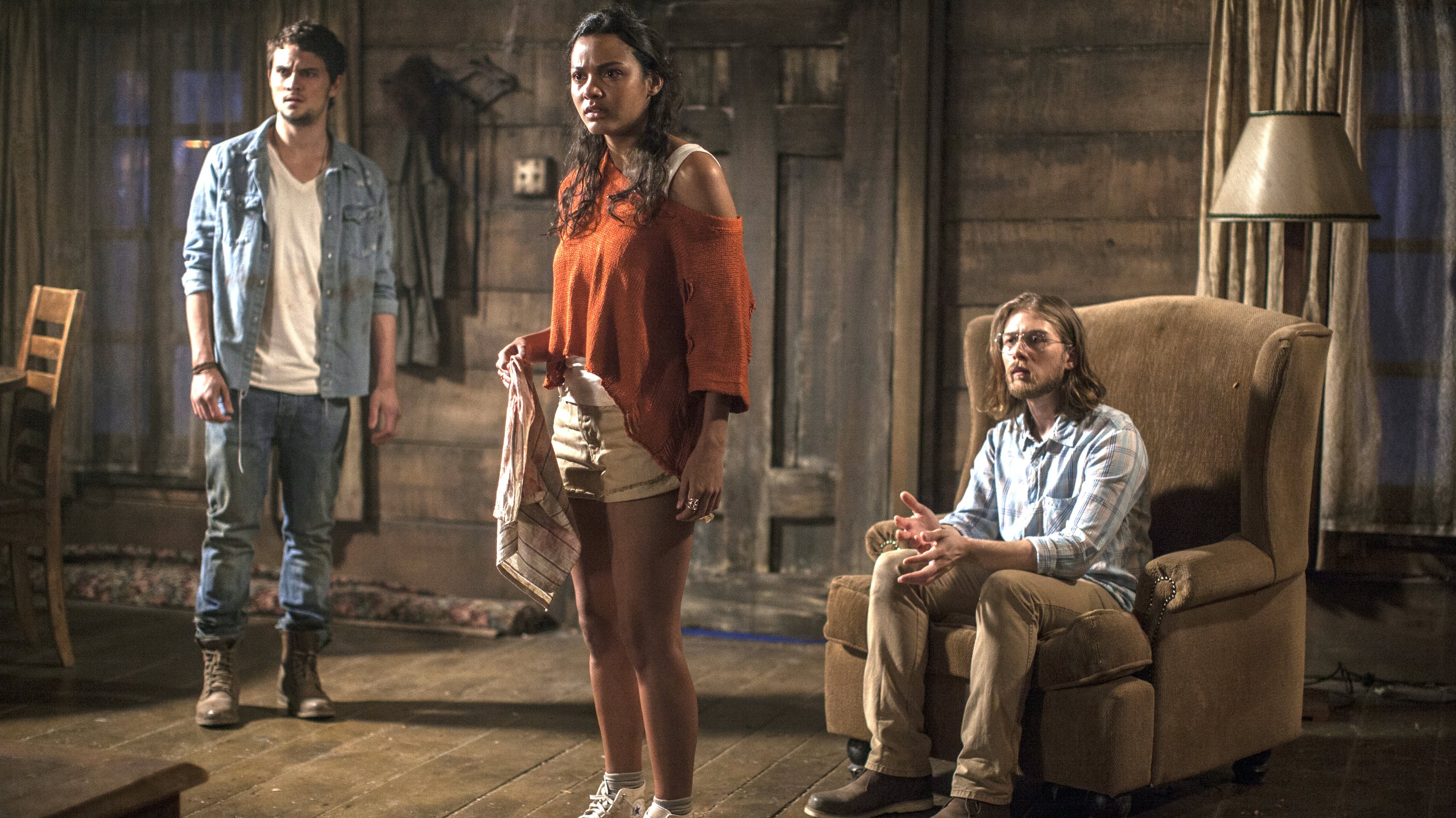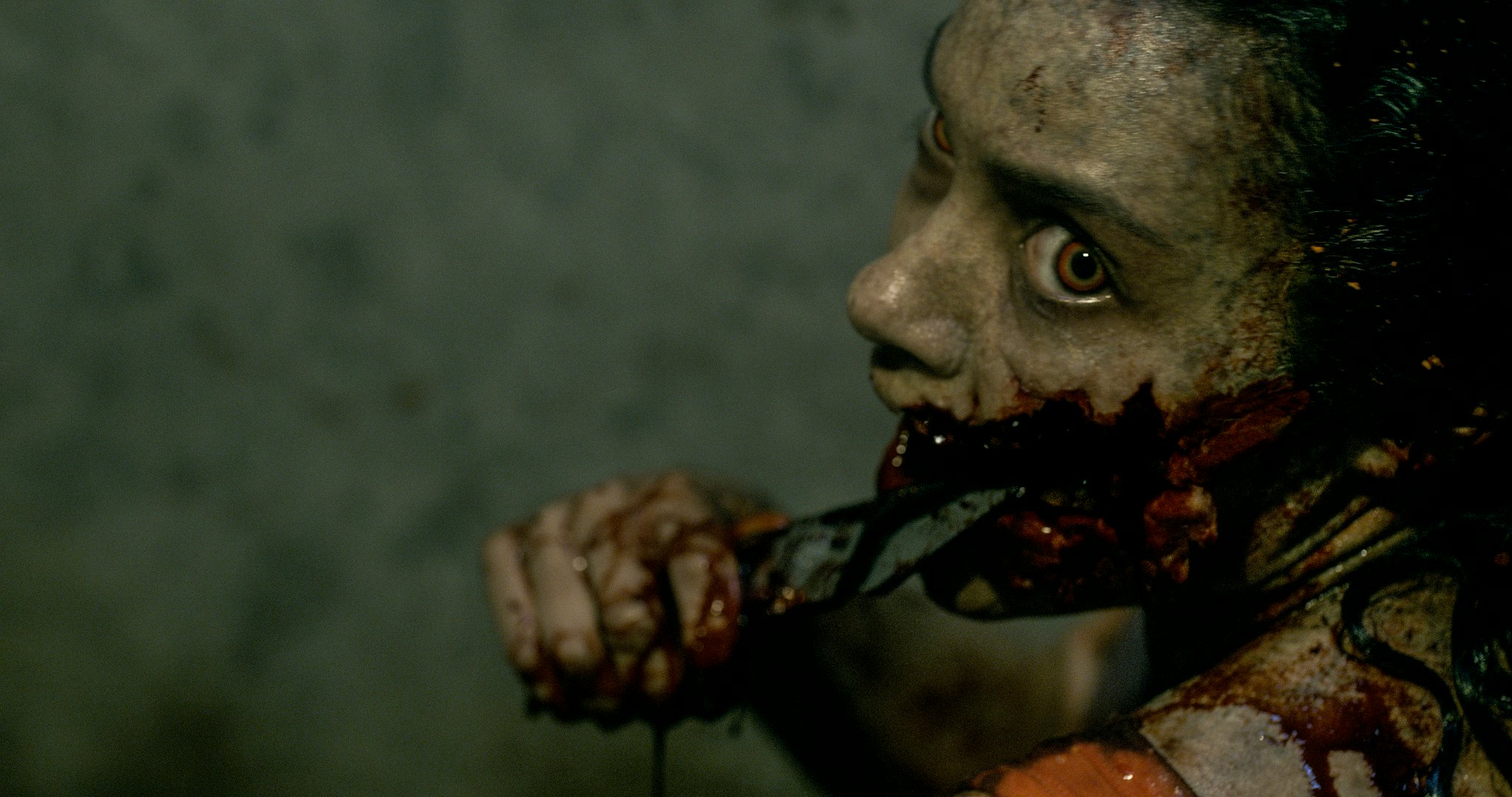
No one sees the world like Sam Raimi. He’s morbid, zany, and unhinged in ways many have tried and failed to emulate. That’s why the 2013 Evil Dead remake seemed doomed from the moment it was announced. Raimi had been the only person to touch this universe, and the energy he brought to it was never going to be matched by another voice, no matter whose it was.
The skeptics turned out to be right, at least in one sense. Fede Álvarez’s 2013 remake is, in comparison to its predecessors, downright conventional. The movie, which came out just a year after The Cabin in the Woods, plays like the primordial cabin horror film. A group of five friends, including a brother, a sister, and a couple, descend on a secluded cabin for the weekend to help Mia (Jane Levy) overcome an addiction.
From there, the film proceeds largely as you might expect. There are a bunch of red flags in the basement, one of our hapless heroes reads from an ancient book, and they’re quickly beset by demons. Evil Dead closely follows the beats of Raimi’s original film, with a few adjustments to account for more modern horror sensibilities and a bigger budget.
The basics, however, are pretty much the same, resulting in a horror movie that plays it straight. Álvarez has a sharp visual eye, but there’s nothing in 2013’s Evil Dead to rival the deliberate tonal whiplash of its predecessors. Aping Raimi is a fool’s errand, and Álvarez recognizes that from the jump.
When you disentangle the remake from Raimi’s films, what you realize is that 2013’s Evil Dead is, above all else, a gruesome and effective horror movie about a group of stupid teenagers stuck in a cabin. The relationships between them aren’t revolutionary, but they serve the story. What makes this remake worthwhile is that, in spite of its straight-faced approach, Álvarez maintains Raimi’s devotion to an excess of gore, including a moment when Mia loses her arm that will sear itself into your brain.

2013’s Evil Dead has the budget to actually execute much of what the original Evil Dead only hinted at. This time, every bit of gore looks real, and the blood is all the right color. As a result, it feels much more visceral and immediate, and less like a live-action Looney Toon. The moments that should be scary are, and the delight the movie delivers comes from its sheer intensity. In the remake, Eric, who reads the Book of the Dead, is stabbed in the face repeatedly. If that happened in Raimi’s film, it would be shocking and hilarious. In Álvarez’s version, it’s played brutally straight, devoid of the slapstick energy Raimi brought to his biggest setpieces.
That’s not to say Álvarez’s movie is totally stonefaced. In one memorable sequence, a woman cuts her own arm off to keep herself from being possessed, then explains her choice by saying, “I feel much better now” as her arm drops to the floor. The comedy comes from the absurdity, but not from the sense that anything is being wildly upended. It’s a moment of bizarre levity inside horrific circumstances.
Álvarez isn’t subverting anything here, though. The original Evil Dead trilogy is a high-wire act that he has no interest in replicating. Instead, his movie revels in the familiar. What’s delightful about Evil Dead is that everything goes exactly as you expect, yet you’re still impressed by the excellent execution. It’s a reminder that there’s comfort in the trappings of a genre. The original Evil Dead is exciting because it feels totally unconstrained by expectation. By contrast, the remake takes advantage of what you expect it to do, like ordering a simple meal that’s remarkably well-prepared.







